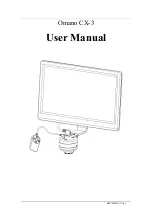
Model 4200A-SCS Parameter Analyzer Reference Manual
Appendix D: Using a Model 82 C-V System
4200A-901-01 Rev. C / February 2017
D-5
Figure 581: Simultaneous C-V waveform
In the figure:
•
CQ represents 595 quasistatic capacitance readings
•
VQ represents voltage reported by the 595 corresponding to CQ
•
CH represents Model 590 high frequency capacitance readings
•
VH represents the voltage reported by the 590 corresponding to CH
Cable compensation
Ideally, the Model 82 would only measure the capacitance of the DUT. However, signal pathways
through the test cables, switch matrix, test fixture, and prober contribute unwanted capacitances that
may adversely affect the measurement.
To correct for these unwanted capacitances, cable compensation should be done before measuring
the capacitance of the DUT. In general, compensate for cables by connecting precisely known
capacitance sources in place of the DUT and then measuring them. The Model 590 then uses these
measured values to correct for unwanted capacitance when measuring the DUT.
Cable compensation involves these steps:
1. The Model 82 calculates the compensation parameters based on the comparison between the
given and measured values.
2. The Model 82 performs a probe-up offset measurement and suppresses any remaining offset
capacitance. This step is done every time a new measurement is made.
Typically, cable compensation is done for all four measurement ranges (2 pF, 20 pF, 200 pF, and
2 nF) of the Model 590. Once cable compensation is done, it does not have to be done again unless
the connection scheme to the DUT is changed or power is cycled.
















































